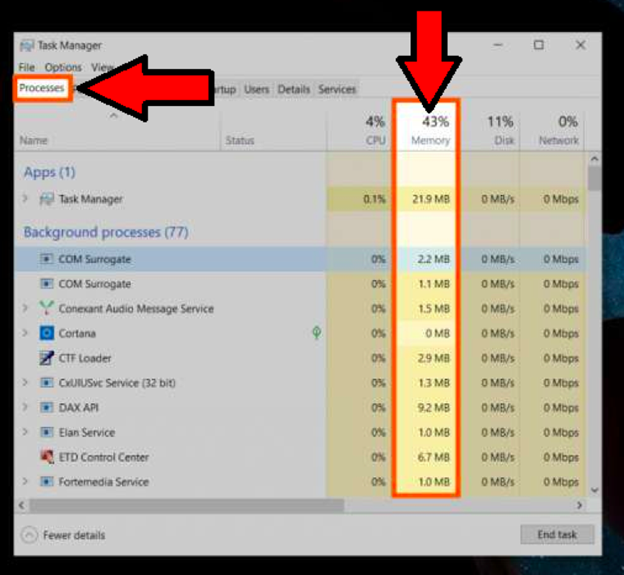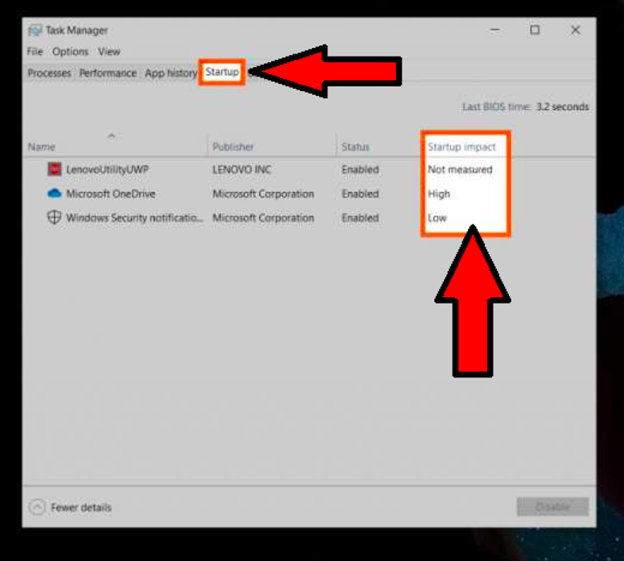- Quick Fixes For Freeing Up RAM
- Restarting Your Computer
- Updating Your Software
- Trying a Different Internet Browser
- Clearing Your Cache
- Removing Internet Browser Extensions
- How To Free RAM In Windows 10?
- Tracking Memory and Cleaning Up Processes
- Disabling Unwanted Startup Programs
- Summary: Free RAM in Windows 10
- Conclusion
How to free RAM in Windows 10? It is quite apparent that Microsoft has decided not to add the Task Manager of Windows XP / 7 to the new Windows 10. While it may not seem like a big deal, being able to see all the active processes in one glance is way more helpful than relying on the Resource Monitor that comes with Windows 10. However, since you are here, you probably stumbled upon this article because you are using a computer with limited RAM and need an application to free up some RAM.

Most users don’t realize how Random Access Memory, or RAM, contributes heavily to the computer’s performance. RAM is a detachable, expandable memory chip used by your CPU’s board to act as a short-term memory holder.
In layman's terms, RAM acts as a clipboard where the list of procedures for the tasks is written. They can be disposed of when the task is closed. The more tasks are needed to be done, the more loaded the clipboard will be.
Just like in a computer, the more programs are running, whether obviously or unknowingly, the RAM can be overloaded and the performance will suffer. So, it is important to free your RAM from time to time if you can’t afford to expand its capacity.
Quick Fixes For Freeing Up RAM
The following options are quick fixes in freeing RAM. However, when you resume doing multiple tasks, the RAM space issue will come back again. Nevertheless, here are the following:
Restarting Your Computer
This might be the simplest solution, but obviously, all programs will be closed when you restart your computer, and there is nothing to be stored in RAM.
Updating Your Software
Updates can do a little improvement, but it is dependent on what your software is offering. As you update, tasks can even get more demanding and can render the update useless in the long run.
Trying a Different Internet Browser
Internet browsers consume a lot of space in RAM to load webpages and process their instructions. The reason why it took you so long to stream a YouTube video, aside from the slow internet connection, is that you might be opening many web pages on different tabs and windows. Good thing, there are internet browsers that manage the RAM resources well.
Clearing Your Cache
The cache contains information of a previous task you have performed on the computer. It is like a sticky note that reminds the CPU that the information stored in the list of instructions already performed, and it will just follow them. Clearing cache can save up memory, but it will be filled again when certain tasks are performed repeatedly.
Removing Internet Browser Extensions
Not only the pages you have loaded can consume the RAM resources, but the browser extensions can also take a portion of it. It can be hard to figure out for a casual user that extensions are running, but a quick glance at the settings can help find them.
How To Free RAM In Windows 10?
The following solutions may not be permanent, but you don’t need to close all the tasks or lose momentum on your computer. The following are non-Band-Aid solutions in freeing up RAM space in Windows 10.
Tracking Memory and Cleaning Up Processes
- Hold the keys ‘Ctrl’, ‘Alt’ and ‘Del’ on your keyboard simultaneously to open ‘Task Manager.’
- Once the window is open, select the tab ‘Processes.’
- Click the column ‘Memory’ to view the processes and the amount of space they are consuming. Base your decision on the percentage.
- If you find some running program that you are not aware of, you can click on that particular program and select ‘End Task.’

Disabling Unwanted Startup Programs
- On the Task Manager window, choose the tab ‘Startup.’
- Click on ‘Startup impact’ to sort the programs based on usage.
- Right-click any unwanted program to disable it.
- In the next boot, you will notice that there will be few icons on the taskbar as Windows 10 is loading the Desktop screen.

Summary: Free RAM in Windows 10
- Open the task manager
- View the processes running on your computer
- Right-click on a process and select Go to Details
- Scroll down to “End Task” to close the process
Conclusion
There are other ways of freeing up RAM space, such as clearing page files, visual effects reduction, and terminating background apps. Still, they are usually the additional options when you do more on the computer than documentation or browsing the internet. For a hassle-free fix, try to replace your RAM with a larger capacity.